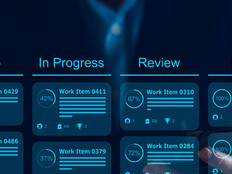Agencies Strive to Tame the E-Discovery Beast
All federal agencies face litigation. It does not matter if budgets are tight, resources are limited or mission needs are more pressing. Whether they are involved in employment litigation, contract disputes, statute enforcement or other legal actions, agencies are constantly responding to requests for data. IT plays a central role in an agency's ability to respond to legal obligations.
The production of relevant documents during civil litigation is called discovery. Electronic discovery (e-discovery) is the process of locating, preserving, collecting, processing, reviewing and producing the relevant electronically stored information (ESI) in civil litigation. Failure to do so fully or in a timely fashion can result in court-ordered sanctions against individuals or the agency as a whole. For example, in the case of In re Fannie Mae Securities, the court held an agency in contempt for failing to meet discovery deadlines — even though the agency had spent $6 million (9 percent of its total budget) on discovery.
Some would say that government agencies are not confident in their ability to meet e-discovery obligations. In a study by consulting firm Deloitte, for example, only 59 percent of government respondents (legal and IT professionals responsible for ESI) believed their agencies had a handle on e-discovery — down from 73 percent the prior year. Agency morale and budget issues, which are widely known, affect both the perceived and real challenges to agency e-discovery readiness.
The reality is that federal agencies have indeed made strides in addressing e-discovery obligations, but they still face both perceived and real challenges.
Challenges to E-Discovery
Experience has shown that there are four main challenges agencies face when establishing effective e-discovery practices:
No time to pause and plan. Agencies have many mission obligations that have nothing to do with litigation. Time and resources already are stretched thin. In the crush, an agency can fail to take a holistic view of how e-discovery tools, such as search and collection tools, or processing and review software, can fit into an agency's IT infrastructure, workflow and mission. For example, agencies have a tremendous opportunity to remake their IT systems and e-discovery workflow as they move systems to the cloud, but they need to have a clear vision.
Whose job is e-discovery anyway? E-discovery obligations run from the top to the bottom of an organization. If an employee has a legal obligation to preserve certain data for discovery, it does not matter if they are the department secretary or a clerk — the information must be preserved. While all have an obligation, it may be unclear who has ultimate responsibility for e-discovery processes. E-discovery operations can fall unclaimed somewhere between the general counsel's and the CIO's offices. By its nature, e-discovery has to bridge multiple disciplines, but if there is no clear ownership, initiatives will fail.
Support from top to bottom. Some agencies have top-level support for e-discovery initiatives; some have bottom-up support. Successful agencies have strategic, all-level support across the functional silos of IT, legal and records. Even if top-level support exists so that funding and staffing are provided, other challenges remain. Top-to-bottom support is necessary because e-discovery touches so many different parts of so many different groups, including records management, FOIA and human resources.
Funding new functions. The most obvious e-discovery challenge is budget. Dedicated, experienced professionals are needed to develop the tools, workflow and support infrastructure to preserve, search, collect, process, review and produce agency data. The right e-discovery tools need to be procured. It is a common misconception that all IT is the same. But just because certain professionals know IT does not mean they know litigation technology and the e-discovery workflow. Litigation technology is a specialized field that requires knowledge of e-discovery tools, how they interact with IT systems, how the technology is changing, and the how the tools support — not dictate — legal needs.
Succeeding in E-Discovery
So what is an agency to do? You know you have e-discovery obligations and face several challenges in meeting them. Here are several best practices that can help you and your agency be better prepared.
Build requirements early with the right stakeholders. When building any IT system or process, there must be clear requirements. In the case of e-discovery, the right stakeholders should be at the table early to address the agency's obligations to preserve, collect, search and provide data. Stakeholders include legal, IT, litigation technology experts, records management and human resources. Know the agency's legal obligations before trying to build the workflow and the system.
Because of the major role ESI plays in litigation, there are now many pitfalls. For example, there is robust case law on the need to preserve and collect original metadata for documents subject to discovery. In addition, agencies have been sanctioned for losing or erasing the data of ex-employees who were subject to e-discovery obligations. Be aware of your requirements in the cases your agency faces.
Perform due diligence and market research. There are thousands of litigation technology companies and tools. But hear this: There is currently no single end-to-end tool that performs all e-discovery functions well. Be prepared to research and select multiple tools to address each stage of the e-discovery process (preservation, collection, search, review and production). Talk to other agencies of comparable size to learn what they have found and how they have designed their workflow. And contact the litigation technology staff in the litigating components of the Justice Department, such as the Civil Division, for their perspective on what works.
Consider that you may already be part of the way there. What tools are already in-house at your agency? For example, does your CIO's office already have software to help with server migrations? Operated properly, such software can be used to preserve metadata for e-discovery. Does the inspector general's office have a license to a search-and-review tool that you could perhaps expand to other parts of the agency? Leveraging what an agency already has keeps costs down and efficiencies up.
Build and communicate the business case to all levels. There may be other groups at your agency, such as the office of the inspector general or the FOIA department, that have similar data preservation, collection and review needs. Greater buying power will help decrease procurement costs and make a stronger business case within your agency. The risk of waste is high when agencies address e-discovery on an ad hoc basis.
Litigation is a reality. All agencies face it. How prepared an agency is requires proactive and collaborative planning. In one case, the court sanctioned an agency and published an opinion calling agency personnel (by name) "lackadaisical" for their e-discovery failures, including erasing the computer of a key user. IT not only sits at the hub of agency e-discovery challenges, but also holds the keys to implementing solutions.








